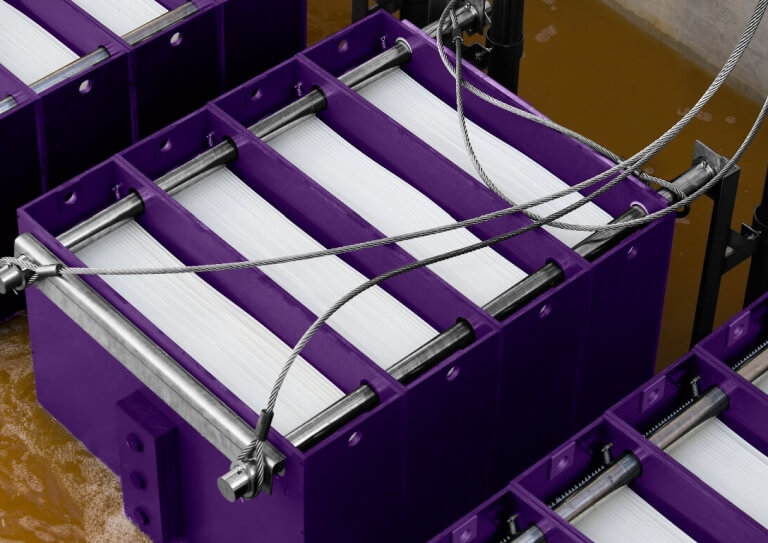- Higher MLSS/MLVSS
- Smaller aeration basin & overall foot print
- Better control of F/M & MCRT
- Fewer problems with solids in effluent
Pores in the membrane allow for water to pass with solids being retained. As pores become clogged with solids - both biological & particulate - the system goes into a backwash cycle to clear the pores and restore membrane function. The problem is that backwashing is not perfect, overtime pores deteriorate with accumulated solids. Even with cleaning technologies that include oxidants, acids, or enzymes - the pores will eventually become plugged.
A leading cause of plugged pores in biological waste treatment units is the accumulation of high molecular weight and "sticky" biological polymers. Organisms that thrive in the low F/M conditions found in MBR systems also tend to excrete copious amounts of extracellular polymeric substances (EPS). While some EPS is good and improves separation potential, the wrong EPS and overabundance of EPS can both create blinding conditions in membrane pores.
The easiest ways to monitor EPS in a biological treatment unit is to run SV30, SVI, and microscopic exam on at least a daily basis. Additional monitoring with molecular testing is equally important - including both Microbial Community Analysis (MCA) and qPCR for specific problem or good organisms which gives earlier warnings for EPS blinding potential. When you have a buildup of problematic EPS, do not just assume that it cannot be corrected. Multiple control methods exist, it is just best to address the EPS problem before membrane issues start to compromise unit performance.


 RSS Feed
RSS Feed